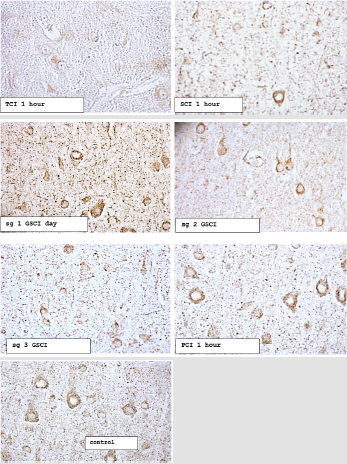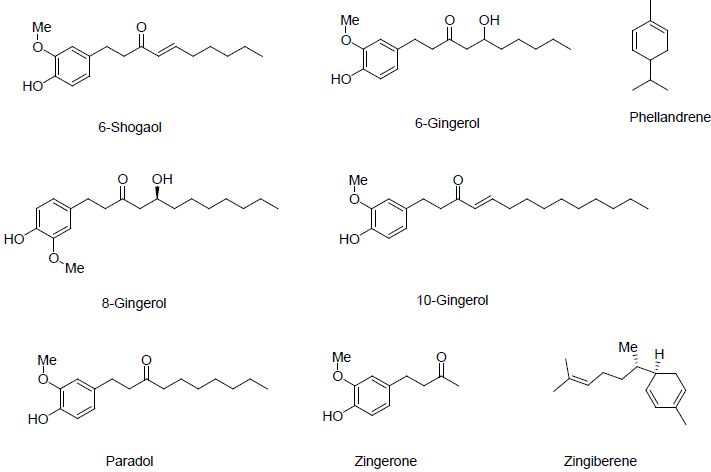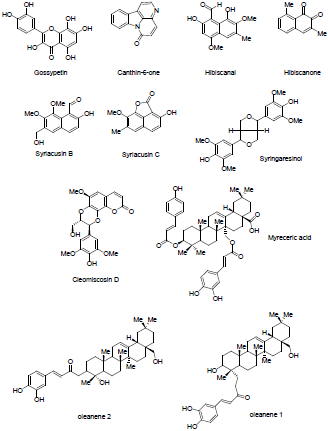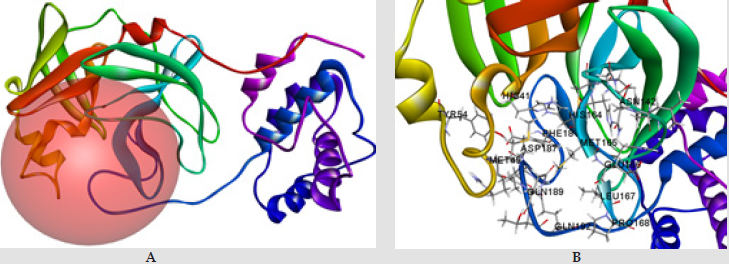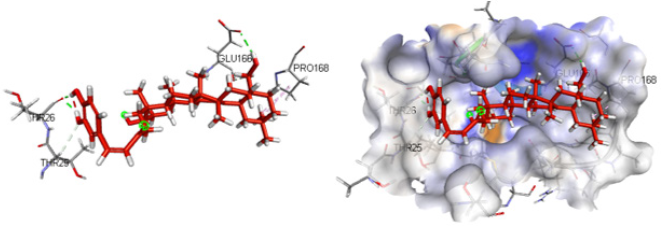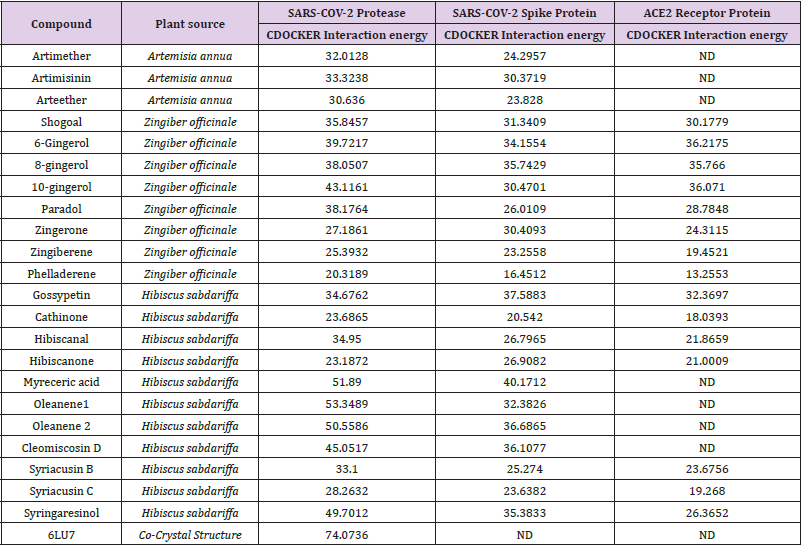The Relational Hypotheses of Earth’s Societies
Introduction
The earth’s society builds, supported by ‹men’s inventions›, with relevant abstract features and intellectual spins, adding personal, communal and sovereign frame standards. The extant ‹nations› distinguish by idioms and governments, enjoying entitled administration and ruling layouts. These characterise the ‹civilisation› idiosyncrasy, assuming peculiar entrustments, such as:
a) Divine running: the material world has governance in upper godlike reality;
b) Natural backdrop: the universe has inner ruling, due to cosmos’ regularity;
c) Interpersonal assignment: the collective steering refers to endorsed edicts.
The divine and the natural ‹laws› are total truths, with upper or inner worth, out of man’s span; they offer consistent ‹faiths›: the former, once transcendence is recognised proposition; the latter, if ‹information› immanence qualifies the material reality. The human ‹laws› are contingent forms, with provisional meanings, linked to current contexts. The ‹faiths› in ‹total dualism› or in ‹qualified monism› are a priori guesses; they deserve a posteriori justifying trials, weather theory foundation is expected. The transcendence cannot enjoy direct perception; the cogent immanence admits the ‹matter/information› coherence, vindicating the cosmos’ physics. The third sample allocation has only posteriori evidence, limiting the build-up of ‹knowledge› and ‹science› to what learned and systematised, having agreement of the fellow researchers.
We do not deal with total laws; we just acknowledge provisional conjectures [1-5]. In the study, the third entrustment is usual pick, to depict the earth’s society, with the account of how the humankind organises the ‹civilisation› questions. The analyses consider the ‹relational hypotheses›, which explore the personal teaching/ learning, copying/emulation, training/appraisal, etc., to implement the series of software/hardware outfits of the human peoples [6- 11]:
• Community organisation: internal infrastructures, for balanced private/public running;
• Legality frames: political substructures, for civil behaviours and communal enactments.
• Authority schemes: autonomy and sovereignty figures, for independent administrations;
• Nation-state operation layouts, to achieve comparative civic and executive performance;
• Mutual establishments: economic substructures, for supply chains and trade provision;
• Productive setups: business, agrarian and industry devices, for goods and stocks making;
• Conversion and restructuring plans: technical and management changes, for throughput. The earth’s society is conservative and intellectual invention, imagining complex sets of mental surveys, to deal with multiple substructures and critical establishments. These software/hardware setups concern the regulation of communities, through internal rules and external safeguards. The idea of structured assemblies brings to rubrics, directives, duties and obligations, all abstract signs, further than material pieces. The intellectual (or spiritual) cues, in keeping with the three starting allocations, have traditionally entailed typifying situations:
• Divine ‹laws›, when ‹spirit› has transcendent connotation, to grant absolute rate;
• Natural ‹laws›, if ‹matter/information› joining assures kami-driven total worthiness;
• Human ‹laws›, if ‹qualified agreement› leads to shared sanctioning of given edicts.
With the molecular biology, genome and its information merge: we only need decoding jobs; the natural ‹laws› involve encoded deterministic issues and ‹spirit› degrades to animism, without upper independent steering. With the human intellect, ‹spirit› converts in mind activity, to handle concepts, imagined and shared as community prerequisite. The survey of the software/hardware setups leading the earth’s society, hereafter, analyses the above listed main formats [12-16].
The Core Formats of Earth’s Society
The earth’s society has anthropoid centering, due to interpersonal talents, i.e., ‹idiom›, ‹market› and ‹law›, Figure 1, based on mental activity, once the human ‹mind› forms by learning and training. In some formal approaches, the ‹mind› format has absolute worth, assigning divine/natural origin to the extant ‹legality› frames. These happen as odd ‹beliefs›, but we have already left total trusts, for contingent guesses, when dealing with the human ‹law› frames [17-21]. The earth extant peoples distinguish by idioms and governments, enjoying joint political and economic layouts. The compositions appear native arrangements, with recent worries on financial flops due to lop-sided split-sovereignty and on wealth inequality of the citizens at the nation and at the world ranges. The hindrances are summarised by assessed facts, with well-known essential hints. Yet, the initial discussion of the current formats permits grasping how the earth’s society develops on ‹relational› skills.
Community Organisation
The earth is negligible planet in the universe, where life courses occur, ensued by living beings with brain-to-mind talent, i.e., intellect. The combined oddities establish complex issues [22-27], by:
• Agentive trails: gene evolution, ethnic greediness, active rivalry, clan solidarity;
• Relational trails: meme fruition, emulation/simulation abilities, wise rationality.
The biology has standard effects: gene evolution› creates many living species, aiming at better-adapted samples, (Figure 2). The ‹mimicry› requires self-awareness, spotting construct as identifying traits. The cognizance courses occur, when mutual completion establishes by personal education with formal gears. The earth’s relational model, typically, avails of three intellection mechanisms:
• Communication tools: the population language and the clan dialect;
• Market tools: the domestic supply and budget balancing by trading;
• Governance tools: the country’s autonomy via sovereign authority.
The ‹selfish gene› affects the relational model, bringing about ‹closed societies› in competition, qualified by idiom and sovereign. The rationality› can suggest switching to ‹altruist meme›, leading to ‹open societies›, at global village consistency. Nonetheless, the ‹closed society› is classic choice: we distinguish citizens from foreigners; the split-sovereignty is coherent standard, to deal with lots of independent ‹nation-states›. The sovereignty happens having citizens’ origin, via ‹Constitution›, which establishes the limits of the government’s acts: the law authenticity resides in citizens; the government has delegated relative power. The ‹people sovereignty› appeared in history periods, when total readings, were no more plausible. Indeed, the authenticity, along centuries, undergoes changes, entailing divine or racial investitures, say, godlike or ethnic worth of the ‹nation›, implying sharp communities’ endpoints.
Legality Frames
The relational interactions involve mimicry skills, each individual being capable to figure out his intellectual duplication. The meme fruition entails the said mechanisms, at three layers:
a) Personal, to learn, practice and transmit the communication idiom and knowledge;
b) Domestic, to manage the family/home sources and accounts by shared marketing;
c) Civic, to fulfil the tribe/nation’s activities and duties, in respect of the indorsed acts.
The three spheres have contingent worh, linked to the timely earth’s society settings. The inner one is interpersonal: it establishes the ‹mind›, with the abstraction talent to objectivise acts, goals feelings and layouts. The next one deals with ‹open societies›, soon, taking out the linked ‹closed society›, into which organising effective legal frames, for the operation political structures [28- 32]. The recent political spheres follow split-sovereignty models, in the ‹capitalism›, with separate ruling than wealth. The ‹income inequality› is actual concern; the ‹fortune inequality› is intricate query: the ‹affluence› of individuals says that the accumulation, due to their activity, is possible, with allowed transmission (within a family); the ‹assets› of enterprises mean that the build-up, due to the tied activity, is qualifying result of the organised business.
The ‹accruals› build up as ‹wealth expansion› or ‹growth›, leading to ‹improved opulence›. The outcome is measured by ‹money› or, using an established designation, by ‹financial capital›, under ‹sovereign› ruling. The ‹wealth› of nations, besides state property (Latin ‹demanium›), assembles private ownership with (public) Treasury (UK Exchequer): the fiscal income links to the gross national product, GNP. If the government expenditures exceed the revenue from taxes, the Treasury shall get into debt, issuing bonds or other sureties. The country’s riches are marginal opulence; the fiscal earnings are usual treasury means, managed as ‹financial capital›, (Figure 3), by legal features
Authority Schemes
The personal/domestic/civic layers allow sovereign political setups, as if the hierarchy aimed and exclusive performance distinguishes the nation state’s spheres. The enabled effectiveness is competition option and the operation layouts distinguish due to the civic and executive planning. The recent events oppose ‹communism› to ‹capitalism›, i.e., state-ruled vs. private-owned wealth. In any case, the ‹nation-state› is basic reference, enjoying ‹split-sovereignty› and ‹democracy› say, the ‹people authority›, (Figure 4), with contingent worthiness [33-38]. The self-ruling governance gives political and economic autonomy. In the picture, the ‹income› allows finance transactions; ‹wealth› links to the ‹stored capital›, with money worth: individuals’ ownerships, companies’ assets and governmental treasury, if we follow the ‹capitalism›, with private vs. public ownership. In the ‹communism› reading, all is communal, under the central nomenclature steering; for a while, the XX century› fancied hinting the community track to be superior feat.
The millennium starts, showing self-disintegration of the conjured enhanced frame. The XXI century ‹capitalism› is hybrid setup, with global urges: ‹communication›, ‹economy› and ‹ecology›. The ‹global communication› provides plenty options, with private profits (known list) and public advantage (including control of citizens’ interactions and messages!). The ‹global economy› means that the ‹split-sovereignty› is non-sense, if the financial independence does not exist anymore: the biasing monetary guiles (Keynes’ manoeuvers, currency devaluations, etc.) are two-edge tricks, untying ruins. The ‹global ecology› is XXI century drawback, leading to downfalls, if out of sustainability plans. These brief cues show that hybrid ‹capitalism›, also, needs revisions.
Teamwork Patterns
The human ‹culture/ethics› syntheses distinguish due to cooperative accomplishments, leading to combine plans, aimed at useful results, with social or technical traits, (Figure 5). The previous points offer cues the authenticity and accounting backings. The supply chain speciality requests, as well, front-end practical material transformations, to obtain useful products. These substructures have processing and economic worth, as the interpersonal acts enable fit issues. The relational options, language, trade and legality, enjoy combined gene and meme trails. The divine spirit is old spur to intellect. In the Darwinism, the gene evolution offers suggestions. Further hints need be added, to summarise the state of the art on the subject, to show the overall complexity of the topics [39-43].
In modern ages, the relational structures stabilise at three levels:
a) The outer political, with the ‹nation-state› invention and the related legality;
b) The middle domestic, with mutual civic establishments and trade provisions;
c) The inner subjective, with agreements on worthy ‹private› and ‹public› roles.
The arrangements are men’s invention, moving from idioms for shared grasp, market for joint business and authority for common officialdom. The red tape is vital, only if parallel actors work. The trade relevant, especially after agrarian/industrial revolutions, with mass-production. Yet, the relational ability establishes with the spoken/written languages, which allow deep understanding and multiple appreciation. The built ‹knowledge› allows sophisticated novelties:
d) The mass-outputs, through the (notably agrarian and industrial) revolutions;
e) The artificial life/intelligence yields, by modulating the cognitive revolution.
The collaborative teamwork is meme fruition chance, stopping gene selfishness, as ‹rationality› shows possible alternatives, towards betterments. The revolutions are bets, with contingent value; a posteriori, only, we become aware of profits. The cooperative thinking is further fulfilment, with ways to the intellectual conception of useful operations and structures.
Productive Outcomes
The work-Organisation revolutions implement software/ hardware setups, with multiple objects and relevant improvements. The ‹inventions› cover mental deployments, fully building intellectual construal, with interpersonal teamwork achievements. Example issues cover:
a) Social enhancements, since the efficiency directly affects the results’ spheres;
b) Legal structures, with creation of ‹nation-state› or other analogous institutes;
c) Political ideas, connecting the domestic assemblies with civic and global links;
d) Technical options, discovering synthetic rulings, to justify the expected issues.
The work-organisation deeply affects the agrarian/industrial upheavals, when the new orders, with independent administrations of split-sovereign countries establish. The outcome brings to the competition of parallel ‹nation-states›, at unlike ‹progress› phases. The ‹revolutions› are technical mark, showing the society’s effectiveness of the current local civilization. The ‹productivity› is talk unknown in wilderness; it becomes critical comparative figure. The ‹progress›, however, is relative quantity: the choice can have preferences, but cannot be sure of an upgrading; our example issues are mind’s ideas, not cosmos’ information [44-49] (Figure 6).
Operation Workings
On our negligible planet, the earth’s society has anthropoid driver, because the ‹intellect› limits to men. The ‹progress› is clever choice: ‹obvious›, if ‹possible›: the ‹productivity› is magic aim; the ‹entropy› shows that limits exist. We might only inspire to anthropic doctrines and we may look at iterating as much as possible the ‹life› and ‹intelligence› singularities via artificial doubles, (Figure 7). The analyses are, possibly, fantastic and, just, used to provide hints. The ‹intellect› or, perhaps, the ‹spirit› looks at the ‹conversion› towards artificial life/intelligence and then, at ‹restructuring› the originally planned ‹technical and management changes›. The images lead to assemble:
a) The relational skill exploration: idiom/symbol, market/trade and authority/law;
b) The matter/knowledge forward/backward ‹conversion› of engineering chores;
c) The design synthesis, effecting natural provisions through artificial replications.
The men’s society develops because of the ‹relational› competences, fashioned and specialized by coaching, tutoring and training the children. The preliminary civilization enjoys substantial lack of restrictions, with loosely interacting tribes, easily moving to set-apart locations. The history age tells about countries and sovereigns in competition, i.e., wars, winners and losers. The periods-to -come show the earth approaching a common global village, in which we need cohabiting, keeping the safeguard of goods and objects we have to share. The future deploys with new challenges: the saving, cutback and remediation are investigated by moving many material processes, to cognitive additions and transformations on intangibles, to minimize the entropy contexts [50-55].
The Earth’s Society Economy/Ecology Defies
The ‹global› defies are curious outcomes, with series of sidefacts, making difficult to excerpt some simple remedy, due to the cross-link of situations. The present analyses address the fact to deal with human communities and look at explaining the ‹civilization› as direct organized outcome of ‹intelligent› operators in their current conditions. The picture entails the useful earth’s sources or ‹natural capital› and the ‹thinking heads›, i.e., the operative skills of men or ‹human capital›, based on agentive and rational talents, to create artificial results. The conventional assessments is rooted in ‹money› or ‹financial capital›, synthetic trick, dressing balanced bargains, once adding up the ‹technical capital›, to include men’s invented procedures and contrivances, (Figure 8). Curbing fact is today the ‹natural capital›: the ‹growth› is ‹transformation-based›; the ‹entropy› presumes decay and the ‹wealth expansion› cannot be endless, but the negative effects will propagate the global village over. The ‹global› defies, simply, show the end of ‹our human cycle› [56-61].
The ‹relational modes› amplify the reality, adding images, links and qualities, i.e., symbolic cues fulfilling, however, the characterisation of the pending occurrences. The multiple accounts, dealing with idiom (to talk), market (to trade) and legality (to enact), show that these modes build on joint interactions, or that the ‹human mind› starts forming, when cross-faced and coached. Linkage and education reflect on the basic ‹capitals›, giving evidence to some meanings and symbols. We recall example hints, to manage the said multiple accounts, in view of future challenges.
Relational Modes
The ‹human progress› is open query. The financial packing (individuals’ ownerships, companies’ assets and governmental treasury) are risky blurs, if just rooted in the ‹contrived› sovereignty of the ‹nation-states›. The dominance gives authority to tax the subjects moving most of the extant gross national product, GNP, to consumption under public rule. If the ‹nation-state› running takes over 50% GNP, we are halfway of ‹communism›. The figure is hot: residual wealth runs private, by cooperation recipes or sunken trade forms. In its place, the nomenclatures, fittingly, organize over self-adaptive hierarchies: the ‹capitalism› vs. ‹communism› or GNP ratio to alter from ‹private› to ‹public› management, has country’s officialdom, more than safe track. The no ahead way is severe query: with ‹communism› (Gorbachev) glasnost, the ‹private› economy returns, since the earlier ‹public› dominance aimed at self-disintegration; with ‹capitalism›, split-sovereign countries make debts with potent suppliers, for amounts exceeding GNP safe ratios (out of constitutional bonds).
The flexibility in debt repayment is ambiguous help, later turned in planned abuse. The ‹nation-state›, with 50% GNP required by ‹public› consumption and national debt equal or bigger than the GNP, is not viable; it will end in downfall, due to government’s decision. The symbolic detection of safe ratios, typically, links to the ‹sovereignty› concept with ‹public› force. Steady cut-off identifies by riven-governance and divided-native/training assemblies, as if ‹independence› or ‹autonomy› is divine or ethnic mark. When such absolute reading is left out, the legality order, (Figure 9), develops in parallel, forming factual ‹public› relational layers, out of the ‹private› ones [62-67].
Outcome Release
The sketch, if the relational options are pivotal truths, reveals ‹natural laws›, say, ‹information› coded within the cosmos. The readings entail monism, along racial and ethnic lines. In alternative, the total dualism refers to transcendent reality, say, ‹god driven occurrences›. The modern age, by explicit or implicit schemes, propose that the European countries practice split-sovereignty, sort of noteworthy achievements via competitive rivalry proficiency. The nation ‹closed society› becomes tool, to tell how and why the success appears rewarding given peoples. Our analyses cannot trust pivotal truths: we might list singularities, carrying contingent worth: ‹life›, prompting repetitions; ‹intellect›, predisposing abstraction. Then, ‹gene evolution› creates the many living specie; ‹meme fruition› establishes the a posteriori ‹relational› framework (without a priory total truths) [68-73]. A priori godly or ethnic partitions bring to rivalry, with side belief, such as ‹Hobbs’ rule›.
War is natural feature, deemed to get supremacy to best-fit groups, because managing ‹closed societies›, in which efficient hierarchies establish. Competition aims at forming top-down authority, indorsing solidarity tests, to foster the clan cohesion. The global economy falloffs mix the nations’ interests: the cross-effects cannot grant the planned steering. A posteriori factual appraisals lead to steady pictures, such as ‹Kant’s rule›: the cooperation adopts altruism habits in ‹open society›. The global ecology shows crosslinks, requiring coupled management, (Figure 10), to describe the ‹outcome›. That result tells that the world citizen aims at global village, with bottom-up authenticity.
Shared Advance
The lose reliability of ‹pivotal truths› with godly or ethnic foundation links with the three-rank relational modes: language (to dialogue), business (to market) and law (to govern). The personal interface ripens, through education practices, towards ‹closed society› solidarity or ‹open society› altruism, if we make use of the above hints. The millennium changes are clear. If global economy brings in conflictual limitation to the sovereignty fragmentation, the global ecology fully eliminates disjointed decision keeping. The thinkable growth requires global village uniform legality, (Figure 11), or the earth needs unchanging governance, maintaining unbroken protection [74-79].
Split-sovereignty is nonsense: the ‹closed societies› swap into a single ‹open society›, in which the relational construal has to work along the rational trail of the altruism, as the transparency of the ecology data tells the haughtiness of the local freedom. The resort to the ‹nation-state› rivalry stops. Instead of ‹mors tua, vita mea›, all move together towards death. The altruism is thrifty remedial, when ‹sustainable corporations› act together with ‹certification bodies›, enabling ‹big society› consistency. The riven governance might deal with protected economy; the global ecology shows that no marginal benefit shall distinguish to sheltered people, since no privilege can exist at the ecologic viewpoints. What we do will repeat with alike hindrances: the ‹altruism› does not tell that are fond of the aliens; it simply says that we avoid poisoning our existence.
Altruism Cues
The citizen of the world does not limit to closed clans; he aims at the global village, built on the ‹big society› options, with bottom-up authenticity. The fact tells that the relational links deploy a set of effects: to enable genome-encoded plans; to resort to intellect options; to compare the on-progress results; to show decision-like talent. The ‹rationality› develops when the interaction level is complex: the gene selfishness does not help; the meme altruism provides hints to address ways-out and to select leads. The relational construal brings forth comparisons, judgments and choices. The meme trail tracks simulation and emulation, since the intellect options add abstract images by mimicry and copy, supporting phantasy specifications, with clearly identified merits [80-85]. The global economy is current request, when segmented markets establish. The global ecology switch in the new selflessness directions, once curtailing cognition follows. The analyses, involving the global village, address the ‹open society› layout: we cannot deal with social or political rights, reserved to the citizens of given countries (Figure 12). The ecology requires removing the privileges, so that, at the interstate range, the civil obligations bring about full altruism compensation. The result is, perhaps, a bit too complex if the split-sovereignty persist. The question is left open, and the third relational range of the ‹legality› is, accordingly, to revise.
Conclusion
The ‹relational hypotheses› offer hints on different purposes. In the present survey, the central drive aims at justifying the factual interpersonal human capabilities, which establish the substance of the civilisation. The analyses suggest complex interpretations, since the images and concepts in the human minds form modify and sore-up with contingent force, but clear evidence [86,87]. Pictures and ideas have readings, in which we may directly recognise strong facts and transitions:
a) The core setups, listing formats that tell the human software/ hardware edges.
b) The critical drafts, giving details on the current economy and ecology settings.
These complex interpretations are, however, imperfect, as the core setups remain contingent, without total truth and the critical drafts are liable priority with restricted efficacy. In the survey, the absolute pictures, done by monism (and information immanence) or total dualism (and godly transcendence) have explicit mention, keeping merely figurative functions. The steady formats can enjoy right acknowledgements, e.g., trusting the formerly exemplified seven figures. At the point, the dangerous economy/ecology traits become serious confrontation, with the further epitomised five traits. The discussion on the subject, certainly, does not stop here [88-91]. The analyses need combining the steady core formats, with the looming critical defies. By now, we can move back to the ‹relational hypotheses›, trying to detail the changeovers to face. The pick has separately to address the situations with explicit links to the entropy trends, either the control on saving/recovery imperatives for ‹sustainability›, namely:
a) The swap into deteriorated surrounds and unhealthy political institutes;
b) The planned reclamation/recycling to yield ordered headway outcomes.
Formal ‹natural laws›, with coherent structure, perhaps, identifies the core setups: the written comparisons are difficult to assess by absolute data. The second research line has just provisional worth, but the appraisals are more consistent. Can we expect programmed ‹sustainability› issues? The global ecology problems imply negative answers, if aimed at ‹absolute› construal. ‹Entropy› is fundamental truth of the cosmos’ inner information: men’s devised tricks to improve efficiency enhance, as well, waste and speed up decay. We may trust in ‹miracles›: total dualism tells that degeneracy affects matter, not spirit; the man’s civilization can be almighty’s design. The ‹faith› in total truths simplifies our guesses, but we, only, relay on our invented ‹science›, say, ‹knowledge›, possibly, a posteriori set by the ‹falsification rule›, just, allowing ‹provisional› readings. The line does not enjoy fixed logic: the weak course, however, can explore operation dualism, once ‹singularities› occur and open peculiar options. On the earth, the ‹life› and the ‹intelligence› are odd discontinuities, bringing in proper agentive and rational wherewithal, i.e., the bases of the men’s civilization.
The civil headway, built by ‹contingent› construal, is provisional or conditional upshot; its ‹sustainability› is not a priori certainty, but just a posteriori upshot. The outlined study offers cues on the subject, telling that ‹sustainability› is restricted and temporary outcome, as any other men’s conceived invention. The social advance combines communication and business with political setups, in view to manage ordered localised ‹nation-states›, each one with its govern. In the account, the parallel countries refer to their preexisting traditions, being obvious that the split-independence does need proof, if, just, the earlier autonomy exists. The ‹sovereignty› does not need explanations: the ‹authority› and the ‹closed society› enjoy acknowledged consent. The present investigation looks at the ‹relational modes› affecting the men in their earth’s life. The enquiry has particularly relevant outcomes, as it permits identifying really important men’s traits: the language invention, the market practice and the authority instigation.
The accounts do not provide absolute proof that the three relational links necessarily develop; the provisional ties are verified hypotheses, once the language finding, the market drill and the authority urging are on duty facts, with a posteriori check. The ‹hoc post hoc, ergo propter hoc› logic cannot be used, however, the links between the three ‹relational modes› is stressed. In alternative, the enquiry is separately addressing the said ‹relational modes›, as if the links shall not establish because of fit equivalence at the interpersonal rehearsal. But: idiom, barter and kerb are mind construal, with fit consistency: the current search shows details more and more meme fruition pertinent, i.e., linked to the rational deployments, after the agentive settings of the gene evolution. The earth’s society organization according to suitable ‹relational› knacks, in which speech and talking or market and barter or authority and kerb are advantages for the citizens’ understanding, manoeuvre and governance, is object of examinations along the study, with helpful niceties.
The details easily connect with ‹immanent information› or with ‹godly pictures› if absolute data are in our availability. These are, surely, imaginary forecasts; the niceties happen being contingent facts, as the ‹relational› talents characterise the humanity and enjoy provisional worth, not total truth. In the inspections, speech and talking or market and barter or authority and kerb are unbelievable brainchildren, maybe, easier to acknowledge, if ‹immanent information› or ‹godly pictures›. The ‹relational› hypotheses, thereafter, have sketches with consistent remarks, but out of necessities: we do not have hints that justify idiom, trade or authority; we say these happenings build and, in parallel, the ‹human cognizance› is awkward narration, with peculiar, induced effects [92-97]. It is hard to tell how far ‹cosmos› and ‹earth› distinguish. In the present analyses, the ‹biology› and the ‹cognition› appear strong occurrences, proposing ‹gene evolution› and ‹meme fruition›, in view of ‹life› adaptation because of agentive peculiarities and ‹intellect› completion according to rational distinctiveness.
We, perhaps, trust in ‹laws of the nature› with inner causality structure; yet: evolution is more factual: it brings the inner changes, to growth cycles and fitting editions. In like measure: fruition has truthful power: it leads the inner talent to emulation and simulation acts and to relational deployments, with rational assessments and decision-making traits. The resort to interpersonal gifts allows exploring parallel images and appraisals and balancing the crossideas or mind by-products. The mental spinoffs deal with the formation and the controlling of the ‹human knowledge›, i.e., the management of our ‹understanding› about what we discern occurring around us. We think to observe, comprehend and partake when involved in physical transformations. The collected data, acknowledged phenomena and designed actions are reliable or truthful notions, so that the ‹human knowledge› happens duplicating the cosmos’ information (in current requests). In conclusion, the ‹relational hypotheses› seem offering the way to bypass the access to ‹total truth›, by factual access to truth, since the interpersonal gifts support operation alternatives.













